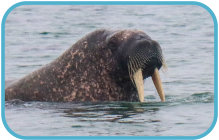
© Nova Fisher www.novatravels.net
Svalbard
Click on any photo to see a slideshow of larger versions
Svalbard
Also known as Spitsbergen or Spitzbergen, Svalbard
is a Norwegian archipelago in the Arctic Ocean
It lies about midway between the northern coast of Norway and the North Pole, The Svalbard Treaty of 1920 recognizes Norwegian sovereignty, and the Norwegian Svalbard Act of 1925 made Svalbard a full part of the Kingdom of Norway. Approximately 60% of the archipelago is covered with glaciers, and the islands feature many mountains and fjords. Seven national parks and 23 nature-reserves cover two-thirds of the archipelago, protecting the largely untouched fragile environment.North West
We headed to the north-western part of the island which contains the archipelago’s most impressive scenery. Deep fjords and narrow channels are flanked by jagged snowy mountain peaks. Immense tidewater glaciers calve icebergs into the turquoise waters. Even in one of the most isolated regions of the Arctic, there is still the captivating history of a pioneering past. Wildlife abounds such as puffins, reindeer, Arctic terns and foxes. We saw the occasional polar bear, although they were in the distance and out of the range of my camera. We travelled up to 79 degrees, 45 minutes.Smeerenburg - ‘Europe’s first oil
adventure’
‘Blubber town’ was the main base for Dutch whaling in the first half of the 1600s. The blubber produced oil for lighting, paint, soap and other products. There were about 200 working men in the town. The most visible traces after the whaling station is the ‘concrete’ from the 12 remaining blubber ovens. The asphalt-looking mass was formed by the greasy whale oil, which was blended with sand and gravel. Long after Smeerenburg was abandoned it was still used as a refuge, equipment storage, a rendezvous for whale birds in the spring and autumn and as a burial ground. There are 101 graves in the area. The rest of old Smeerenburg has largely disappeared under layers of sand. Our plan was to land and walk around to see the remnants of the whaling blubber ovens and graves. However this was not possible as the beach was occupied by a large group of walruses. We went on a morning zodiac trip and watched a group of walruses. Many were huddled in a group with several swimming in the sea.Bjornfjord
The ship went along the coast to Bjornfjord (the Bear Fjord) in Albert I land at Spitsbergen. The fjord is located between Reuschhalvoya and Vasahalveya and is an inner branch of Smeerenburgfjorden. There are more than five beautiful glaciers in the fjord. We went out on the zodiacs to see the glaciers closeup. Early Departure The forthcoming bad weather conditions due to Hurrican Idalia, Franklin and Tropical Depression Eleven resulted in us leaving Svalbard early so we could sail across to Greenland via a gap in the weather before the storms. Strong winds and high swells are forecast for our arrival on the east coast of Greenland.
Longyearbyen
Longyearbyen, the administrative centre of Svalbard, is in a valley on the shores of the idyllic Adventfjord, surrounded by steep mountains and several glaciers. There are only around 25 miles of roads in this village, which is divided into several neighbourhoods, including the town centre and Nybyen (New Town), which consists of charming miners’ barracks constructed after the war, as well as guest houses, a restaurant and gallery, and not to mention beautiful views of the landmark mountain, Hiorthfjellet.




















